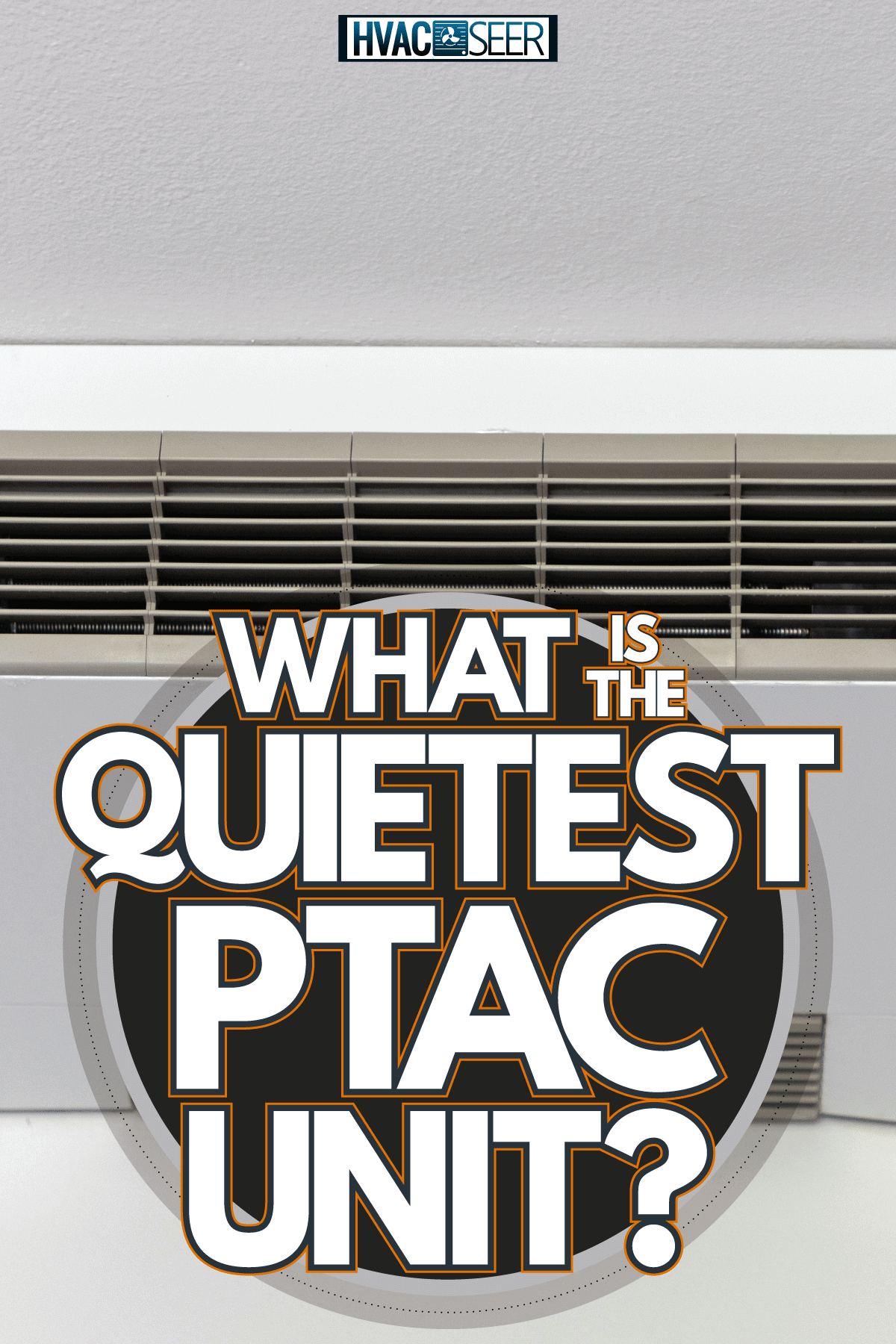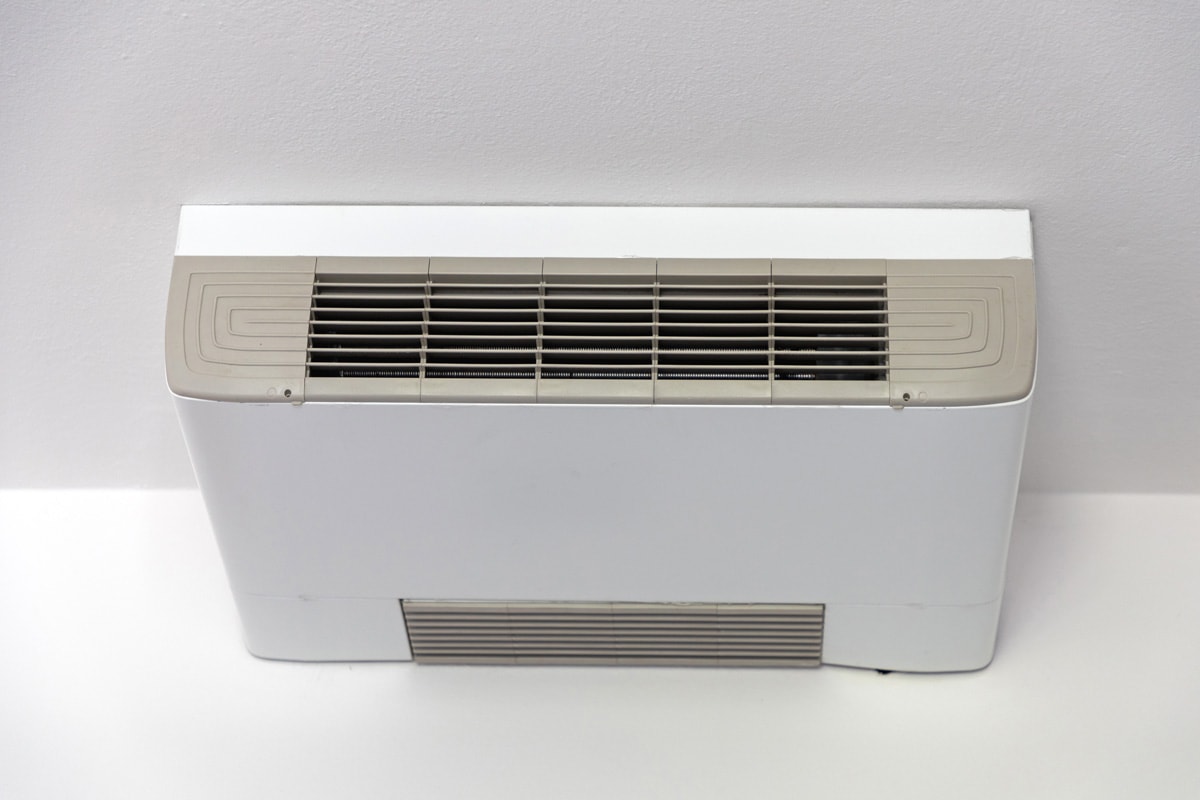The quality of Packaged Terminal Air Conditioners (PTAC) can be evaluated based on several grounds. Perhaps you are looking for the quietest PTAC unit the market offers. If so, you landed on the right page—we sifted thru the most-recommended options to find the best one in this regard.
The award for the quietest PTAC unit goes to GE Zoneline! Quietness is rated based on three aspects:
- Ability to block outdoor noise
- Loudness of the unit when in use
- Sound quality
Do you need a PTAC that represents the simple luxury of a quiet room? Read on to see how GE Zoneline can contribute to this and more. This post will outline why GE Zoneline takes the top spot for the quietest PTAC in the industry.

The Quietest PTAC Unit
Hotels and other commercial establishments commonly rely on PTAC units to cool or heat individual rooms at a time. This is because they are affordable and easy to install (with no ductwork needed).
We discovered that the dominating brands in this industry have set their own standards on what it means to produce a quiet unit. Information overload can make it difficult for someone to decide which PTAC to buy.
Therefore, our solution to this dilemma is to focus on the reader—you. Envisioning your needs as a prospective buyer, we pursued the most straightforward formula possible. GE has spent much time perfecting this formula to make the silent PTAC.
So let's discuss how they fared on three relevant criteria:
1. Ability to block outside noise
Because the PTAC replaces a hole in the external wall, it essentially becomes part of that wall. We expect it to provide some sort of insulation against outdoor noise. During our quest to determine which PTAC is most silent, we've come across this topic the most.
Sound Transmission Loss (STL) is the ability of a barrier to impede sound from passing through. STL is measured in a laboratory using a standard method called ASTM E90.
In this method, pink noise with known intensity is played from the source room and then measured in the adjacent receiving room to find out how much sound was "lost" or blocked by the barrier—which, in this case, is the wall with a PTAC installed.
Depending on which frequencies (pitch) are prioritized, STL is translated into two ratings:
- Sound Transmission Class (STC)
- Outdoor/Indoor Transmission Class (OITC)
Higher scores on both of these ratings mean better insulation. Let's take a deeper look at GE's ability to block outdoor noise.
Sound Transmission Class (STC)
Of the two STL ratings, STC was developed first and is still widely used these days to determine the efficacy of soundproofing. It weighs heavily on frequencies associated with human speech. GE Zoneline has a high STC rating of 29.
A note on Amana
GE's competitor Amana primarily promotes their Q series PTACs in the same vein. Recent developments have catapulted Amana to the top of this class—scoring 31 on STC. They were able to achieve this by covering the vent door.
This is worth mentioning since PTACs are usually used in small and medium-sized rooms like apartments with kitchen hoods. And considering the purpose of your room, advances in construction methods can allow for a tightly-sealed enclosure, which means a necessity for soundproofing.
While that certainly helps keep outdoor sound outside, it also poses the risk of depressurization when combined with the use of exhaust fans or range hoods. Depressurization, or lower air pressure, prevents exhaust systems from working properly. Nobody wants to smell like yesterday's lunch.
Amana's ventless design prevents makeup air, which is supposed to bring in filtered and temperature-controlled air to "make up" for what your range hood expels.
So why GE?
GE offers dual benefits in quietness and preventing depressurization thru makeup air with their GE Zoneline PTACs.
Let's move on. Another rating is steadily gaining traction as the heavier basis for soundproofing capability.
Outside Inside Transmission Class (OITC)
While STC is more relevant to blocking noise from the adjacent room, OITC was specifically designed to measure how much external noise is mitigated. This distinction is attributed to the fact that OITC gives more weight to the lower frequencies, as compared with STC.
This is especially significant since outdoor noise is mostly made up of lower frequency sounds such as street traffic, construction, low-flying planes, etc.
GE Zoneline boasts a high OITC rating of 21.
2. Loudness of the Unit
Aside from the ability to insulate outdoor noise, we assessed the sound power (volume) of GE Zoneline with its closest competitors. Sound power is expressed in units of decibels or dBA. Lower dBA means quieter, as perceived by the human ear. And that's what we're aiming for.
Again, Amana was the leading competitor here. GE hits a better target by a margin of around 3 dBA.
3. Sound Quality
What sounds good? This one is arguably subjective. One might prefer the constant rumbling of railroads over shuffling foot traffic; or the crowd at marathon events over ambulance sirens. What sounds acceptable to one may not be for the other. And to a further extent, what is pleasant to hear can vary from ear to ear.
The good thing is that this question becomes answerable once we reduce it to the matter of PTAC sounds. That’s why, as depicted in this white paper from GE, a jury of around 200 people of varying ages was subjected to a blind study to determine the better-sounding PTAC.
Since Amana put up a good fight in the other categories, they were again selected to pit against GE. In the study, the PTAC units were placed in neighboring hotel rooms to simulate normal living conditions. For a proper comparison, equal capacity units were used to represent each company.
The facilitators ran each unit through several common operation modes. From start-up to low-cool, from high-cool to high-heat pump, etc. Participants rated the sounds during each mode as a way of quantifying this subjective question.
Besides rating the sounds from each mode, the participants were asked questions like:
Do you find any of these sounds displeasing?
Would you be happy with your stay at this hotel?
That day, the results were clear as day. GE rated better than Amana in 63 percent of the tests. Moreover, Amana was only preferred over GE in 8 percent of tests. GE Zoneline is the better-sounding PTAC unit as compared with Amana's units.
How can I reduce PTAC noise?
If you have an existing PTAC that's noisy to run, you may choose to employ one of the several noise reduction methods we have listed below:
Plan the layout of your room
Have you ever walked into a totally bare room—just walls and windows but nothing else—and clapped your loudest clap? You'd be surprised at the difference that furnishings make in terms of dampening sound.
Sound can amplify when it bounces. Rather than letting it bounce, let it be absorbed instead. Some materials like wood can absorb sound to lessen its intensity. Consider placing indoor plants, soft furniture, or soft-anything for that matter, as they all have the potential to soak up your PTACs rattle and hum.
If your existing PTAC is installed in narrow hallways or corners, it's in a bad spot (acoustically speaking). If repositioning it is a possibility, try facing them to as much open space as possible.
Conduct proper cleaning and maintenance
Clean it regularly. It may seem obvious, but overlooking this simple task from the get-go can come back to bite you someday. For example, clogged air filters can cause your PTAC to continuously run an annoying whistle. We recommend cleaning or replacing the air filters once a month.
Moreso, a healthy maintenance routine includes preventive maintenance and checking for damage. You may find DIY ways to fix minor problems or refer to the user's manual. But in near-extreme cases, if you hear weird sounds coming from the unit, it's best to call AC maintenance professionals to take a look.
Upgrade it
Consider using a noise blanket. Ask the manufacturer of your PTAC for accessories compatible with your unit.
Other than the suggestions listed above, consider changing your PTAC for a newer, more efficient unit. Modern PTACs are designed better with the user in mind. In general, newer models are quieter than older ones.
How long does a PTAC last?
A PTAC can last up to 7 years on average; 10 if well-maintained. That's why representatives from most PTAC-producing companies, such as LG and Amana, stress the importance of regular cleaning and maintenance to extend your unit's life.
You'll find that replacing your old PTAC can be a reasonable way of lowering utility costs in the long run, especially if your unit is way past its life expectancy period. When the sentimental time has come to finally let go, you can look for rebate programs from your local utility company to reduce the cost of replacements and cheer you up.
Wrapping up

When low noise is your priority, we recommend the GE Zoneline PTAC. We hope that this post has helped in your search for the quietest PTAC unit.
Be informed. Be sure to check out these other articles:
